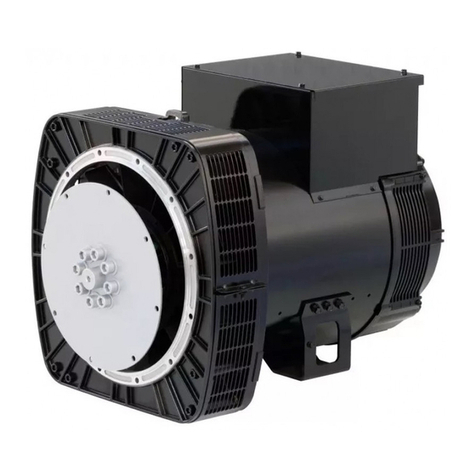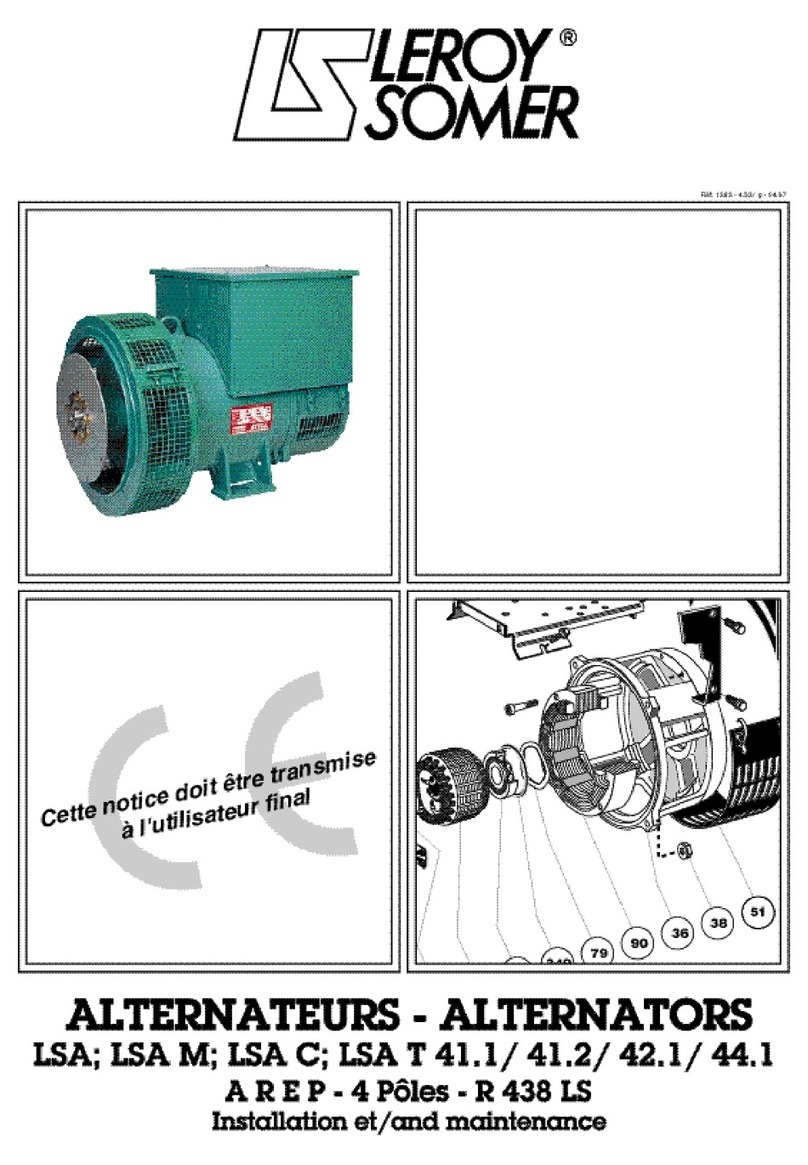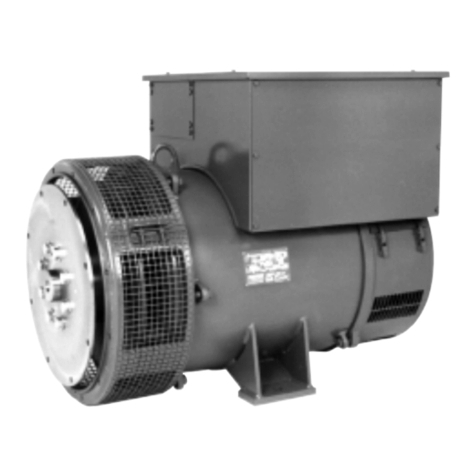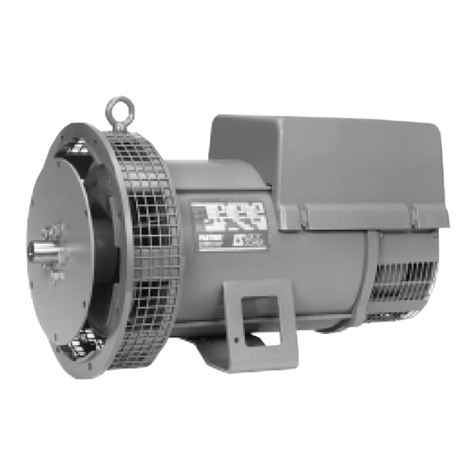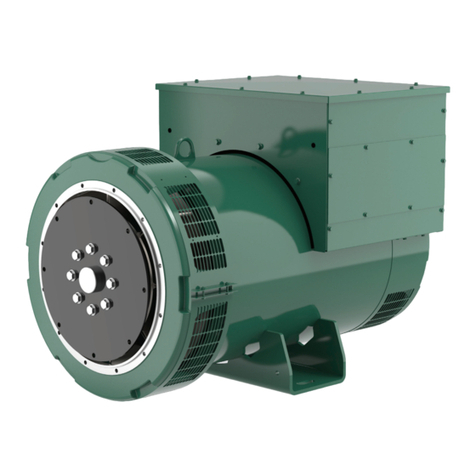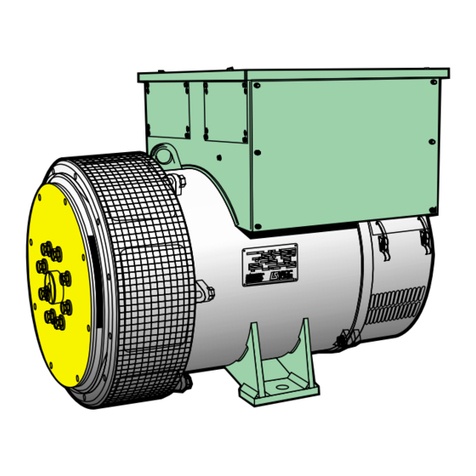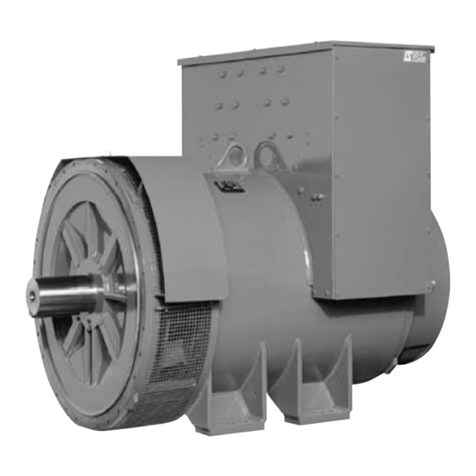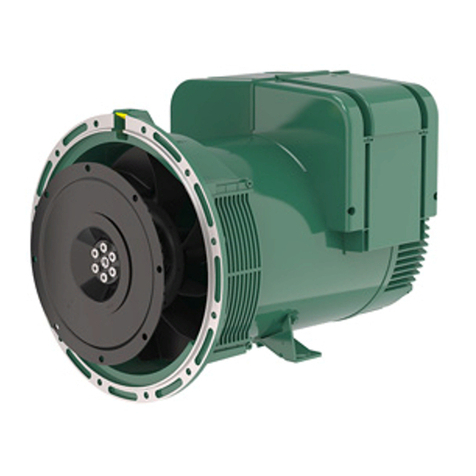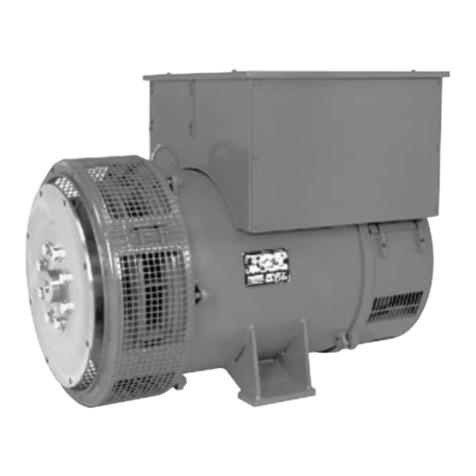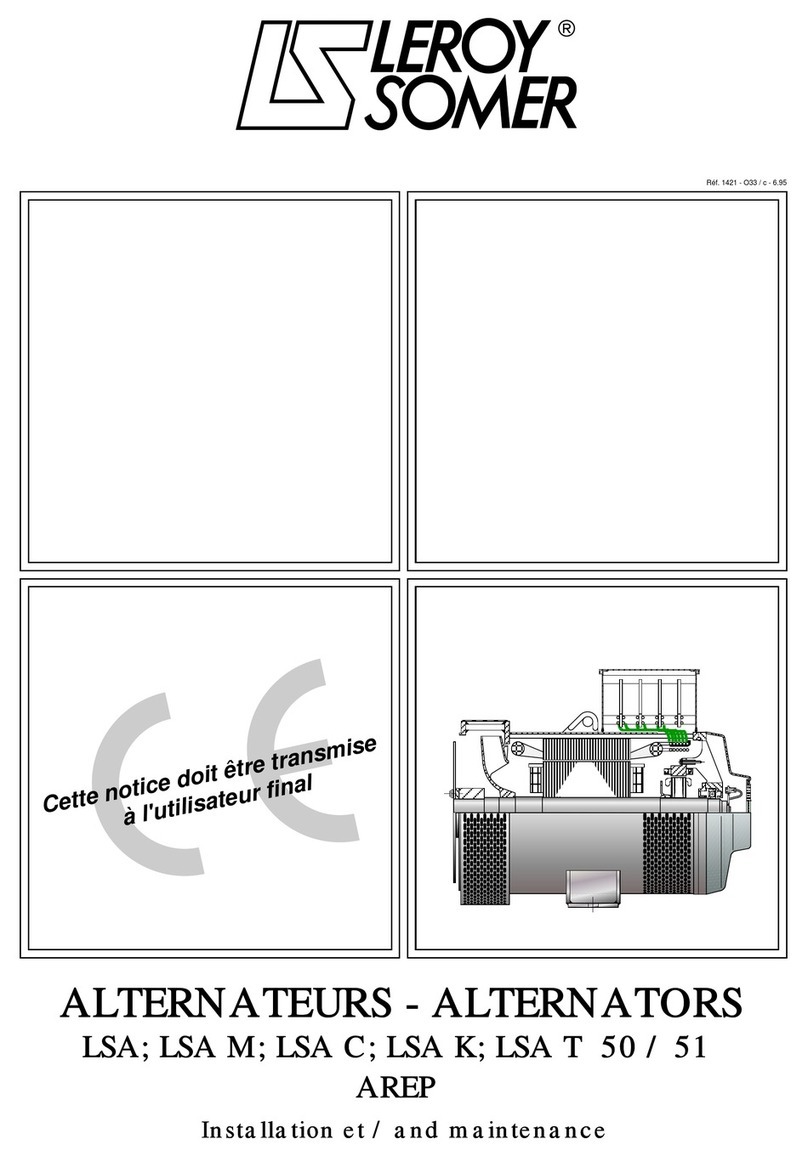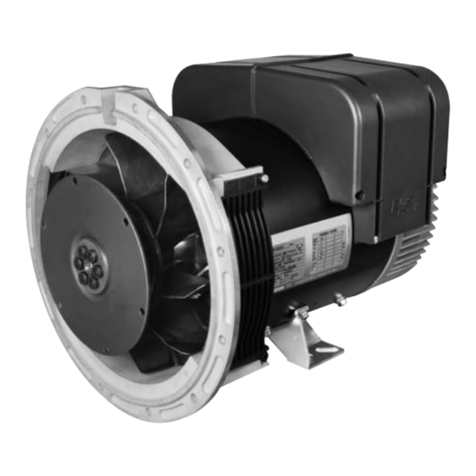
10
INSTALLATION AND MAINTENANCE
LSA 49.1 4P
ALTERNATORS
3007 en - 2010.06 / j
LEROY-SOMER
4 - SERVICING - MAINTENANCE
4.1 - Safety measures
Servicing or troubleshooting must be carried out
strictly in accordance with instructions so as to
avoid the risk of accidents and to maintain the
alternator in its original state.
All such operations performed on the alternator
should be undertaken by personnel trained in the
commissioning, servicing and maintenance of
electrical and mechanical components, who must
wear the appropriate personal protective equipment
for mechanical and electrical hazards.
Before carrying out any work on the alternator, ensure that it
cannot be started by a manual or automatic system by isolating
the power in any cabinet or enclosure and make sure you have
understood the operating principles of the system.
4.2 - Regular maintenance
4.2.1 - Checks after start-up
After approximately 20 hours of operation, check that all xing
screws on the alternator are still tight, plus the general state of
the alternator and the various electrical connections in the
installation.
4.2.2 - Cooling circuit
It is advisable to check that circulation of air is not reduced by
partial blocking of the air intake and outlet guards: mud, bre,
soot, etc, and to check whether the ventilation guards are
corroded or scratched.
4.2.3 - Bearings
The bearings are greasable. It is advisable to lubricate the
alternator during operation and when it is rst commissioned.
The lubrication characteristics are given in the table below.
NDE / DE bearing 6322 or 6226 C3 6320 C3
Quantity of grease 60 gr or cm350 gr or cm3
Lubrication interval 4500 hrs of operation
Lubrication intervals are given for grease type
LITHIUM - standard - NLGI 3
The factory lubrication is performed with grease :
ESSO UNIREX N3
Before using another grease, check for compatibility with the
original one. Monitor the temperature rise in the bearings,
which should not exceed 60°C above the ambient temperature.
Should this value be exceeded, the alternator must be stopped
and checks carried out.
4.2.4 - Electrical servicing
Cleaning product for the windings
Do not use : trichlorethylene, perchlorethylene,
trichloroethane or any alkaline products.
Certain strictly dened pure volatile degreasing agents can be
used, such as :
- Normal petrol (without additives); inammable
- Toluene (slightly toxic); inammable
- Benzene (or benzine, toxic); inammable
- Ciclohexare (non toxic); inammable
to clean the stator, rotor, exciter and diode bridge.
The insulating components and the impregnation system are
not at risk of damage from solvents (see the above list of
authorised products).
Avoid letting the cleaning product run into the slots. Apply the
product with a brush, sponging frequently to avoid accumulation
in the housing. Dry the winding with a dry cloth. Let any traces
evaporate before reassembling the alternator.
These operations must be performed at a cleaning
station,equipped with avacuum systemthat collects
and ushes out the products used.
4.2.5 - Mechanical servicing
Cleaning the alternator using water or a high-
pressure washer is strictly prohibited.
Any problems arising from such treatment are not
covered by our warranty.
The alternator should be cleaned with a degreasing agent,
applied using a brush. Check that the degreasing agent will not
affect the paint.
Compressed air should used to remove any dust.
If lters have been added to the alternator after manufacture
and do not have thermal protection, the service personnel
should replace the air lters periodically and systematically, as
often as necessary (every day in very dusty atmospheres).
After cleaning the alternator, it is essential to check the winding
insulation (see sections 3.2 and 4.8).
4.3 - Fault detection
If, when commissioned, the alternator does not work normally,
the source of the malfunction must be identied. To do this,
check that :
- the protective devices are tted correctly,
- the connections comply with diagrams in the manuals supplied
with the alternator,
- the speed of the unit is correct (see nameplate).
Repeat the operations dened in section 3.
WARNING
WARNING
